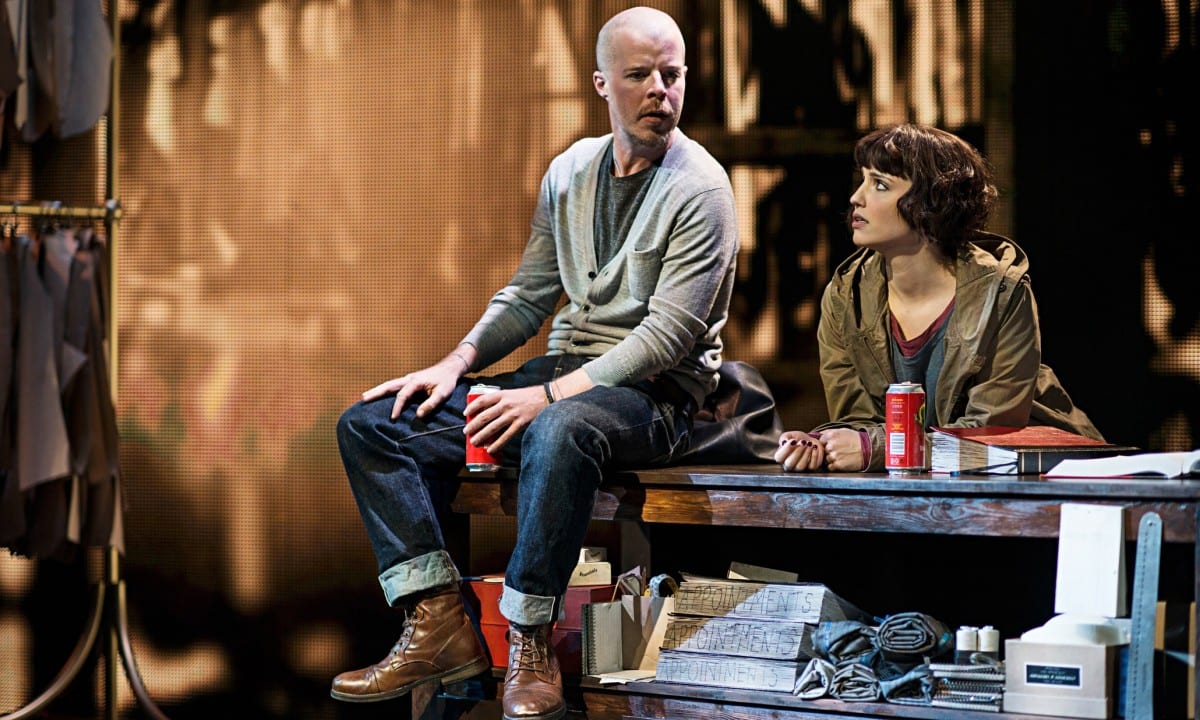Lee Alexander McQueen committed suicide in February 2010, the day before his mother’s funeral. In 2007, Isabella Blow, his friend and patron, committed suicide after several failed attempts. McQueen, James Phillips’ new play about the designer, is set between the two events, and imagines one night in McQueen’s imagination, full of models, parties, muses and ghosts. Dahlia, an American fan, has been watching his house from a tree, and chooses this night to break in to steal a dress – instead of calling the police, McQueen agrees to take her out and show her London, and they embark together on a journey across London into his past.
The play is a brief biopic, out of chronological order: it starts in McQueen’s Mayfair house, then heads to Anderson and Sheppard, the Savile Row tailors where he learnt the fundamentals of his craft; we sit in on an interview with a probing and sceptical journalist, and see London from the roof of the East London flat block where McQueen grew up. The tension between public and private life – between ‘Alexander’ and Lee – is palpable throughout the play, but is referenced rather than explored.
Overall, the fault of this play is its lack of depth – it has tried to be a lot of things, and in the end fails to be any of them. It asks questions about talent, what makes a good artist, the way art is sold, love, depression, friendship, betrayal, grief and fashion, but fails to answer any of them satisfactorily. Sometimes the storyline feels more like an excuse for a debate on the nature of depression than an exploration of the life of the designer.
This is not to say that the play does not have its moments of depth or beauty. Wight’s performance is outstanding – not only is he the spitting image of the late designer, he switches between moods effortlessly, going from angry to pensive in a moment. Although Agron is a good actress, her delivery is stinting and uncomfortable, and her character is given less depth and a worse script than Wight’s. Tracy-Ann Oberman is brilliant as the spirit of a lisping, posturing Isabella Blow, and she and Wight work well together as they explore the relationship between the two.
The scene in Anderson and Sheppard is charming, as Dahlia and McQueen try to tease out exactly what a dress is, and he get an insight into his (or Phillips’ view of his) creative process as he creates a dress for Dahlia in the middle of the shop. The only speaking characters in the play are McQueen, Dahlia, the tailor Mr. Hitchcock, Isabella and the reporter Arabella – the ensemble cast is made up of dancers whose costumes nod to many of McQueen’s designs and catwalk shows, and the effect is magical, like we are inside his imagination.
The text of the play is sometimes incredibly beautiful and haunting, as the characters muse on the purposes and meaning of fashion and art – and sometimes sadly crude, verging on a romanticisation of mental illness when Dahlia talks about her experiences of self-harm. The lack of an interval allows the audience to remain caught up in the world of the play, but extending it to a full length might have given Phillips and the actors more room to explore the issues raised in the story. Although this play has too many questions and no answers, it is a touching homage to the man and the designer, but ultimately – like McQueen himself – has a lot of wasted potential.

